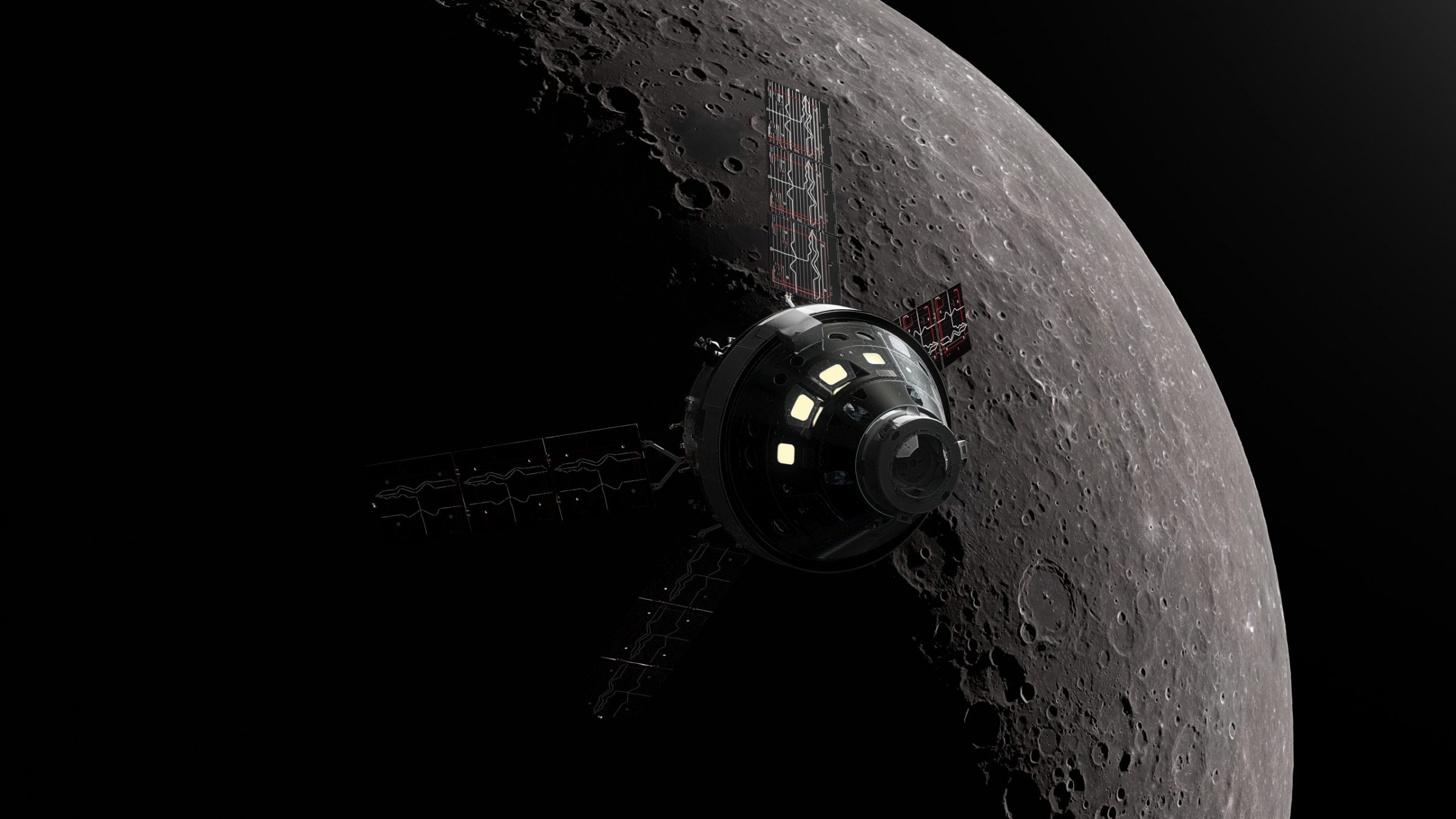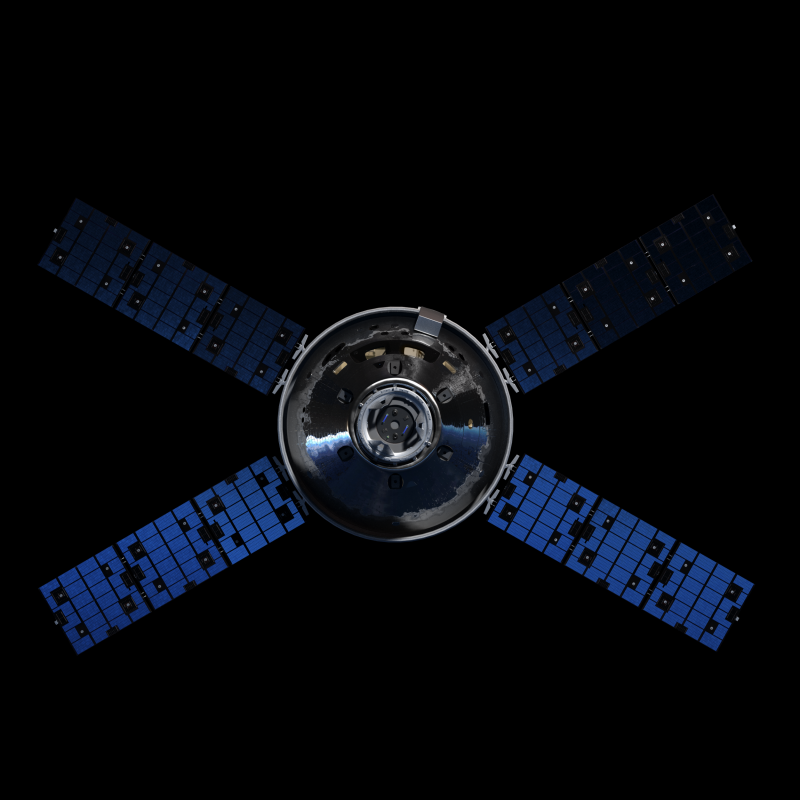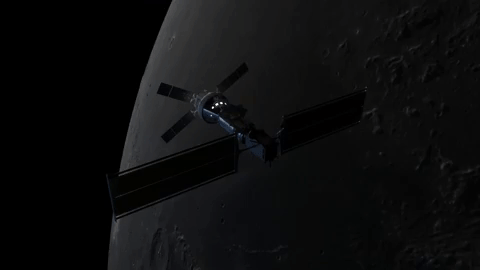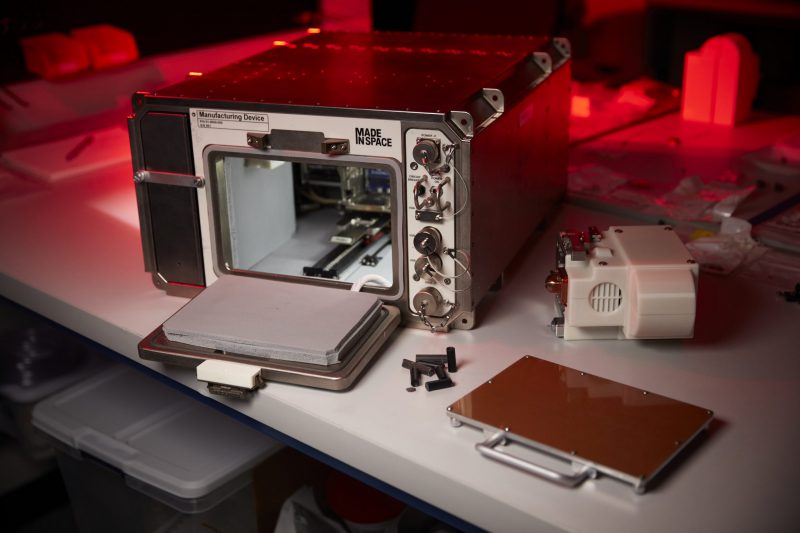
With the Artemis I launch just around the corner, there is a new age of exploration and discovery on the horizon. This critical milestone will mark the beginning of NASA’s Artemis program, which seeks to land the first woman and first person of color on the surface of the Moon. Beyond bringing people back to the Moon, Artemis will also use innovative technologies to study the Moon like never before for scientific discovery, economic benefits, and to inspire a new generation.
Redwire’s power-generation, in-space manufacturing, and engineering solutions are making an impact on not just Artemis I, but future Artemis missions. Redwire is also delivering critical capabilities that will be essential to future sustainable human spaceflight missions to the Moon and Mars. Below are just a few of the ways Redwire is supporting the Artemis Generation
Cameras for the Orion Spacecraft
The Orion Camera System will be the “eyes” of the Orion spacecraft, an essential part of the Artemis program. Orion is NASA’s next-generation human spacecraft for deep space missions and will enable humanity’s return to the Moon in preparation for future manned missions to the Moon and Mars. The Orion Camera System, developed by Redwire for Lockheed Martin, is an array of 11 internal and external inspection and navigation cameras developed for the spacecraft. The cameras will capture critical, unprecedented footage of important operational milestones and events throughout the mission. The data and footage captured will also prepare us for future Artemis missions.

For Artemis I, Redwire is also providing a unique camera kit for the mission that includes a virtual reality camera and forward-facing console camera located inside the spacecraft.
Redwire is not only providing cameras for Artemis I, but also for future Artemis missions. Last year, Redwire was awarded a follow-on contract to provide the Orion Camera System for Artemis Missions III-V with options for Artemis VI-VIII.
Learn more about the Orion Camera System and Redwire’s contract with Lockheed Martin here.
Sun Sensors for the European Service Module
Alongside the Orion Cameras System, Redwire’s critical components are also enabling the groundbreaking Artemis I mission. Through a contract with Airbus, Redwire is providing four redundant Coarse Sun Sensor (CSS) detector assemblies for Orion’s European Service Module (ESM), an important part of Orion’s solar power generation system. Redwire’s CSS detectors are part of the Solar Array Drive Electronics and will provide the data needed to adjust the ESM and Orion’s solar panels, which are powering the spacecraft.
CSS technology has successfully performed in highly elliptical, geostationary and low- and medium-Earth orbits, on various interplanetary missions to the Moon and Mars and in deep space. Redwire has supplied sun sensors for more than 50 years and this technology, including the CSS, Fine Sun Sensor, and Digital Sun Sensor, has enabled more than 70 NASA missions.
Powering NASA’s Gateway
Redwire’s first-of-its-kind power generation technology, the Roll-Out Solar Array (ROSA), will be a key element of the Power and Propulsion Element (PPE) for NASA’s Gateway, a critical part of the Artemis program. It will serve as an outpost orbiting the Moon, providing vital support for humanity’s return to the Lunar surface and as staging points for deep space exploration.
As the first segment of the Gateway, PPE is a key component of NASA’s overall Artemis plan to land the next humans on the Moon. A crucial element of Maxar’s PPE design are two extremely large ROSA solar arrays, which will provide 65 kilowatts of power to the largest solar electric propulsion system ever produced for a civilian spacecraft. PPE is targeted to launch no earlier than November 2024 on a Falcon Heavy rocket from Launch Complex 39A at Kennedy Space Center.

Redwire’s groundbreaking ROSA technology is an ultra-lightweight, compact, modular and scalable solar array system that was successfully demonstrated on the International Space Station in June 2017. Various modular versions of the ROSA solar array are currently enabling NASA’s DART Mission and the International Space Station. Future iterations of ROSA could be used to power infrastructure on and around the Moon for future Artemis-related missions and programs.
In-Situ Resource Utilization for Future Missions
Leveraging its in-space manufacturing expertise and legacy of manufacturing parts, tools, and other necessities onboard the International Space Station (ISS), Redwire is developing technology that will enable in-situ resource utilization (ISRU), by which technologies will use the Moon’s resources to produce water, fuel, and other supplies as well as capabilities to excavate and construct structures on the Moon. ISRU is a cornerstone of the Artemis program and will be critical for future missions to the Moon and Mars.
The Redwire Regolith Print (RRP) Mission, developed in partnership with NASA’s Marshall Spaceflight Center, is a technology demonstration of 3D printing in space using simulated lunar regolith as feedstock material. RRP was developed to advance this critical ISRU capability that can be used to support NASA’s Artemis program.

In 2021, RRP successfully demonstrated core components of the fused deposition modeling printing process with regolith feedstock material using Redwire’s Additive Manufacturing Facility currently onboard the ISS. This was the first time lunar regolith simulant was used for three-dimensional printing in space. RRP technology is ultimately intended to manufacture infrastructure and mission hardware on the lunar surface using local materials, thus reducing launch mass for future Artemis missions. Construction applications may include landing pads, foundations, roads, habitats and habitat furnishings.
In recent years, Redwire has developed a range of pathfinder technologies to address other ISRU priorities including new capabilities for metal manufacturing, recycling, self-repairability, and electronics printing.
As humanity enters into a new, exciting era of space exploration, Redwire is proud to support the Artemis program with next-generation, innovative technology that will enable our sustained presence on and around the Moon and beyond. Stay tuned for the Artemis I launch, scheduled to launch no earlier than August 29 at 8:33 a.m. EDT, along with updates and insights from Redwire throughout the mission.



